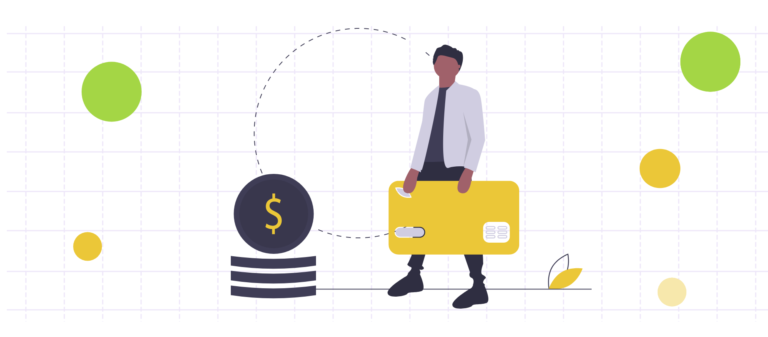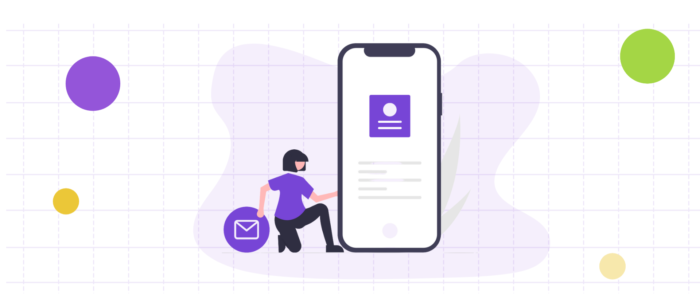Campaign Feasibility Studies: Pros & Cons of Three Models

After a year of adapting to all kinds of extreme challenges, your nonprofit may find itself ready to kickstart a new era of growth. The pandemic has brought a range of new tactics and exciting trends to the fundraising landscape, but one thing remains the same—nonprofits looking to significantly and sustainably grow their capacity need to plan and conduct capital campaigns.
At the Capital Campaign Toolkit, we’ve helped countless organizations plan and execute campaigns designed to help them scale up their operations and better pursue their missions. We’ve seen firsthand the difference that these campaigns can make, but they can be challenging for newcomers without a clear sense of what to expect from all stages of the process.
If your nonprofit is ready for a large-scale campaign in the next year or two, we want to share some insights. We’ll focus specifically on one aspect of capital campaigns that growing nonprofits might have never encountered before: feasibility studies.
Capital Campaign and Feasibility Study Basics
What are capital campaigns?
Capital campaigns are major fundraising initiatives that give nonprofits the infusions of support they need to make capacity-building investments, like new construction projects and equipment purchases.
The capital campaign model is flexible and can be adapted for organizations and goals of all shapes and sizes. They’re also time- and resource-intensive, so they require plenty of preparation (like through feasibility studies) to safeguard all of your hard work.
What are feasibility studies?
Feasibility studies are an integral part of the earliest stage of a capital campaign. These studies gauge the opinions of your key stakeholders, their understanding of your need for a campaign, and their interest in supporting it. By getting a sense of your campaign’s feasibility early, you can shape your plans accordingly to maximize results.
How do you conduct a feasibility study?
Knowing exactly how to approach your feasibility study can be a challenge if you’ve never conducted a capital campaign before. For a quick overview of how these studies work, check out the complete Capital Campaign Toolkit guide to feasibility studies.
Once it’s time to conduct the study, fundraising consultants will often make it seem that your only viable option is to hire them to complete it for you. While that can be a good choice in some cases, it’s not your only option. After all, it’s your campaign, so you can chart your path to take the approach that makes the most sense for your nonprofit.
However, it is essential to note that there are right and wrong ways to conduct a feasibility study. A misguided or loose study that’s not rooted in concrete goals won’t be valuable if it doesn’t accurately measure stakeholders’ interests and opinions. This lack of understanding can be very detrimental if you later move forward with the campaign and find that the support isn’t there.
So while there are several feasibility study best practices that you must follow, how you put them into action is where you have some freedom of choice. You can take three general approaches to conducting a feasibility study—consultant-led, DIY-style, and advisor-guided. Let’s walk through each model and its pros and cons.
The Traditional Model: Consultant-Led Studies
This approach to feasibility studies involves hiring an expert to conduct it for you from start to finish.
Fundraising consultants often offer specialized services specifically for feasibility studies. They’ll work with you to understand your campaign’s preliminary goals, prepare the study, conduct interviews with your stakeholders and key donors, and then report their findings.
Pros of this model:
- The interviews are prepared and conducted by an experienced partner. This can ensure that all interviews go smoothly and that your goals are clearly communicated to your stakeholders.
- The consultant brings an objective, outside perspective. Interviewees with deep ties to your organization may be more likely to provide their honest thoughts to a third party. The consultant will then be able to offer objective recommendations based purely on the study’s findings.
- The study results in a concrete deliverable—a written report with credible recommendations. Your consultant’s authoritativeness and report will help ensure full buy-in from your leadership once it’s time to start the campaign.
Cons of this model:
- Consultant-led studies won’t help to deepen your relationships with stakeholders and prospects. A third-party perspective does bring credible results, but it also means you miss an opportunity to get stakeholders interested and excited about your campaign on a more personal level.
- These studies don’t provide direct insights into individual feedback or open up opportunities to discuss sensitive topics. Without a hand in the process, your nonprofit can miss out on valuable pieces of feedback from individual interviewees.
- Even with valuable findings and recommendations, the logic behind these recommendations can be opaque. Your consultant may not provide the full context behind their recommendations, leaving your team unsure of the most crucial big-picture or long-term takeaways.
- Consultant-led studies have a relatively high cost, especially compared to alternative models.
In some cases, a consultant-led feasibility study can be the right move. Many organizations will choose to work with a campaign consultant throughout the project anyway, in which case you might build the initial study into the engagement from the start.
For growing nonprofits or those looking for more flexibility, however, playing a more direct role in the feasibility study can be a more cost-effective choice that also helps deepen their donor relationships from the start of the campaign.
The DIY Model: Do-It-Yourself Donor Conversations
For some organizations, it makes sense to conduct their feasibility studies themselves. Since they essentially consist of conversations or interviews with the people who’ll play essential roles in your campaign’s success, taking a DIY approach to feasibility studies is entirely doable.
Pros of this model:
- DIY studies provide firsthand feedback and insights into stakeholder responses. This direct line of sight gives you the full context for interviewees’ thoughts and opinions, which will be invaluable as your campaign takes shape.
- They actively build relationships with stakeholders and prospects. The personal touch of a DIY feasibility study shows interviewees that you genuinely value their thoughts and lays the groundwork for potential donations once the campaign begins.
- DIY studies can result in early donor commitments. If everything goes well, your most dedicated donors and stakeholders may immediately agree with your plans and commit to making a gift to the campaign.
- This approach involves minimal cost—you’ll just need to cover any printed materials you’ll use and the labor time needed to prepare and conduct interviews.
Cons of this model:
- Best practices don’t inherently guide DIY feasibility studies. While you can take plenty of steps to prepare for your study, there’s always room for error, especially if you’ve never been part of one before.
- You may see disagreements or a lack of buy-in from your leaders on your study’s findings. Without an authoritative partner at the helm, getting everyone on the same page about your campaign’s feasibility can be challenging.
- Staff or board inexperience can impact your study’s outcomes. Interviews with prospects can be delicate undertakings. Without best practices guiding your questions and responses, your findings can be skewed.
- DIY studies can require significant time commitments from your organization’s director, board chair, and other leaders. They should be directly involved in the study’s interviews to signal professionalism, but the entire process can eat up a lot of time.
Organizations that prefer the structured, hands-off model of consultant-led studies or that simply don’t have the bandwidth to tackle them alone should likely shy away from a completely DIY approach.
However, for organizations with the time and ability to prepare thoroughly, this model can be a valuable and cost-effective way to gauge stakeholder opinions. If you choose to take a DIY route, remember that your feasibility study is a foundational and vital part of your campaign.
To prepare, you’ll have to do plenty of research into feasibility study best practices. You’ll also need clearly defined campaign objectives and a working goal, broken down into different gifts of varying levels in a gift range chart.
Some preliminary prospect research (learn more with this Double the Donation guide), backed up by wealth screening and historical fundraising data in your donor management system, will be invaluable for guiding your interviews.
The Hybrid Model: Advisor-Guided Feasibility Studies
Rather than completely handing your study over to a consultant or committing to conduct it yourself, you can work with a campaign advisor or coach to take a hybrid approach. This way, you receive professional guidance from capital campaign experts but conduct stakeholder interviews yourself.
Pros of this model:
- A hybrid approach lets you actively build relationships with stakeholders and prospects. Your team’s involvement shows interviewees that you value their thoughts and are invested in your campaign’s success.
- The help of an advisor ensures that your study is backed up by best practices. Plus, you’ll learn how these studies work along the way, which can be invaluable in all kinds of future fundraising contexts.
- A guided study also results in a concrete deliverable. After you conduct your interviews, you can work with your campaign advisor to compile an authoritative report and get their professional recommendations based on your findings.
- The involvement of an expert can build the confidence of your board members. Your advisor will lend your study credibility, which can generate more buy-in for your campaign. Plus, your board members will get some initial training and support on the process, which will help them feel confident heading into the campaign.
- Guided studies can result in early donor commitments. Like with DIY-style studies, conducting your interviews yourself can help to motivate your most dedicated stakeholders and donors to make early donation commitments.
- This approach is roughly half the cost of a traditional consultant-led study. Rather than paying for someone to take over the entire study, you’ll pay for the guidance of an advisor who’ll provide the strategy and oversee the process as your team executes it.
Cons of this model:
- Since your staff and board will be involved in conducting interviews, their inexperience can impact the outcomes of your study. An advisor’s guidance and training should help to reduce this risk, though.
- Additionally, the time commitments of conducting interviews yourself can be draining for your director, board chair, or other leaders. However, this investment of time is necessary for a truly effective study.
Organizations that prefer a fully hands-off approach and don’t mind the cost might still opt for a traditional consultant-led study, while those with tighter budgets and the time to prepare can succeed with a DIY model.
However, a guided hybrid approach gives your nonprofit the best of both worlds—the support of a capital campaign expert and the direct experience of conducting the study yourself. This model can work well for any nonprofit planning a capital campaign, although it still requires time and resources.
At the Capital Campaign Toolkit, we recommend the hybrid, advisor-guided model of feasibility studies for most nonprofits. Its benefits deliver the most long-term value and truly prepare your team for the campaign to come without overwhelming them right off the bat.
Capital campaigns are significant undertakings that can have game-changing impacts on your mission. Your feasibility study is a critically important piece of the puzzle. Whichever approach you ultimately choose, be sure to give it plenty of thought and preparation, whether that means researching potential consultants or learning best practices for conducting interviews yourself.
Additionally, be prepared to adapt as needed, adjusting your plans and strategies based on your study’s findings. The main idea is to give yourself flexibility. No two campaigns are exactly alike, so there’s no one way to conduct a feasibility study.
Capital Campaign Readiness Assessment
Is your organization ready for a capital campaign? This simple assessment tool will help you find out. You’ll assess six key areas of your organization. Take this free assessment now and find out if you’re truly ready for a campaign.
Amy Eisenstein, ACFRE, and Andrea Kihlstedt are co-founders of the Capital Campaign Toolkit, a virtual support system for nonprofit leaders to run successful campaigns. The Toolkit provides all the tools, templates, and guidance you need — without breaking the bank
.svg)



